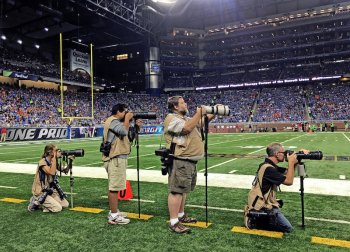An interesting idea, but I'm not sure I fully agree with it. If you look back at many photos that were taken with film - not the masterpieces, but the more average works - it seems to me that smartphones offer technically superior images. Digital photography means that people can practice photography much more easily (you instantly see the photo you took, and there's no charge to develop the photo), and even lack of skill can sometimes be made up by getting lucky after taking a ton of photos (the "spray and pray" approach). The ubiquity of smartphones also means that someone is likely to be in the right place and at the right time to get that masterpiece. So the idea of using photos from some random person instead of a professional has merit in certain cases, particularly for news stories.
Higher-end cameras are still technically superior, but they're pushing beyond what we could do even with film. It's less that smartphones are lowering the bar of what's acceptable, and more that the higher-end cameras are going so far beyond it that many people might not see the need for it, nor the benefit. After all, what benefit is there to shooting with a high-end camera with 50 megapixels if you're just going to post photos to Facebook? In that regard, the way we view and interact with photos is likely what sets the bar for what's acceptable.
One last thought from me is that there has been a fairly rapid pace of development with digital photography, including cameras in cellphones. It seems to me that the overall leaps made in the arena of cellphones have been larger. Cellphones have already largely taken the place of "point and shoot" cameras, and in some cases they're within striking distance of higher-end cameras. Yet higher-end cameras are limited to the expectations and working styles of photographers and the old concepts of what a camera body should look like. Cellphones don't have those constraints, and being miniature computers designed to do practically anything, it seems to me that their potential for development is greater. They still have a very long way to go before they can beat traditional cameras in many areas, but I wouldn't be surprised if they get there.
You make some well thought out and good points. (Ray steps off of his high horse











